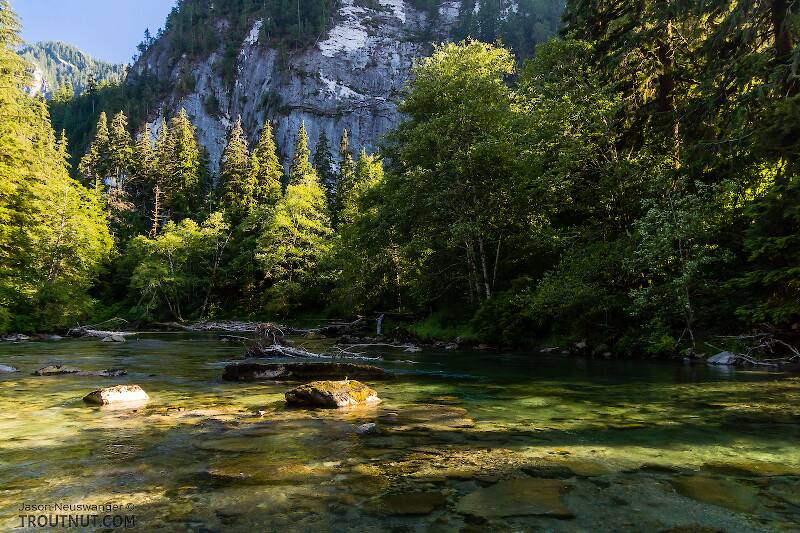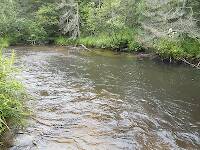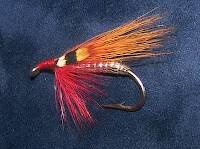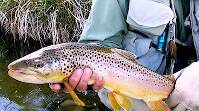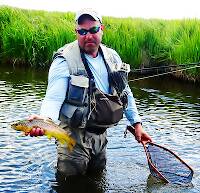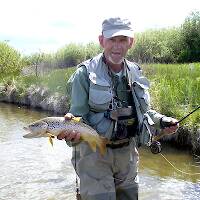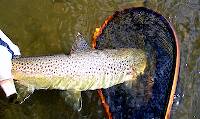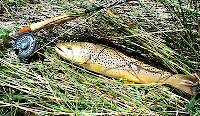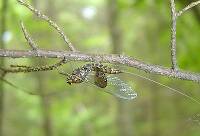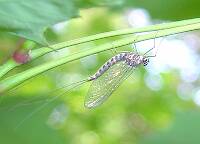
Salmonflies
Pteronarcys californica
The giant Salmonflies of the Western mountains are legendary for their proclivity to elicit consistent dry-fly action and ferocious strikes.
Featured on the forum

As far as I can tell, this species has only previously been reported from one site in Oregon along the Columbia gorge. However, the key characteristics are fairly unmistakable in all except for one minor detail:
— 4 small yellow spots on frons visible in photos
— Narrow occipital spinule row curves forward (but doesn’t quite meet on stem of ecdysial suture, as it's supposed to in this species)
— Short spinules on anterior margin of front legs
— Short rposterior row of blunt spinules on abdominal tergae, rather than elongated spinules dorsally
I caught several of these mature nymphs in the fishless, tiny headwaters of a creek high in the Wenatchee Mountains.
— 4 small yellow spots on frons visible in photos
— Narrow occipital spinule row curves forward (but doesn’t quite meet on stem of ecdysial suture, as it's supposed to in this species)
— Short spinules on anterior margin of front legs
— Short rposterior row of blunt spinules on abdominal tergae, rather than elongated spinules dorsally
I caught several of these mature nymphs in the fishless, tiny headwaters of a creek high in the Wenatchee Mountains.

Troutnut is a project started in 2003 by salmonid ecologist Jason "Troutnut" Neuswanger to help anglers and
fly tyers unabashedly embrace the entomological side of the sport. Learn more about Troutnut or
support the project for an enhanced experience here.
Pdcox on Dec 10, 2019December 10th, 2019, 11:23 am EST
Fished the Niangua River in central Missouri. I have rarely seen surface or in the film action over the years. Yesterday, 9 AM, 51 degrees F, overcast skies, the rainbows went wild on these. I had seen several black flies about, but found no takers of the dry. Finally hooked two on a BWO dry, go figure, and persuaded one of them to show me what they were eating. Pictures attached. Any confirmation?
https://pauldavid.smugmug.com/Bugs/i-ggdDd2n
https://pauldavid.smugmug.com/Bugs/i-ggdDd2n
Millcreek on Dec 10, 2019December 10th, 2019, 3:46 pm EST
Paul,
The pictures don't look like a Simuliidae. The antennae of the insects in the picture is too long. They look more like some kind of caddisfly.
The pictures don't look like a Simuliidae. The antennae of the insects in the picture is too long. They look more like some kind of caddisfly.
"If we knew what it was we were doing, it would not be called research, would it?"
-Albert Einstein
-Albert Einstein
Pdcox on Dec 10, 2019December 10th, 2019, 11:41 pm EST
thank you, will look more deeply into them
Martinlf on Dec 12, 2019December 12th, 2019, 12:45 pm EST
Yes, caddis.
"He spread them a yard and a half. 'And every one that got away is this big.'"
--Fred Chappell
--Fred Chappell
Brian314 on Mar 7, 2020March 7th, 2020, 11:40 pm EST
Looks like Black (aka Mothers Day) caddis but there is a hint of olive in 2 of the bugs so maybe Rhyacophila (green sedge) ???? :-)
Troutnut on Mar 9, 2020March 9th, 2020, 5:40 am EDT
Definitely caddisflies. Looks like some pupae and drowned adults.
Jason Neuswanger, Ph.D.
Troutnut and salmonid ecologist
Troutnut and salmonid ecologist
Quick Reply
Related Discussions
Topic
Replies
Last Reply

